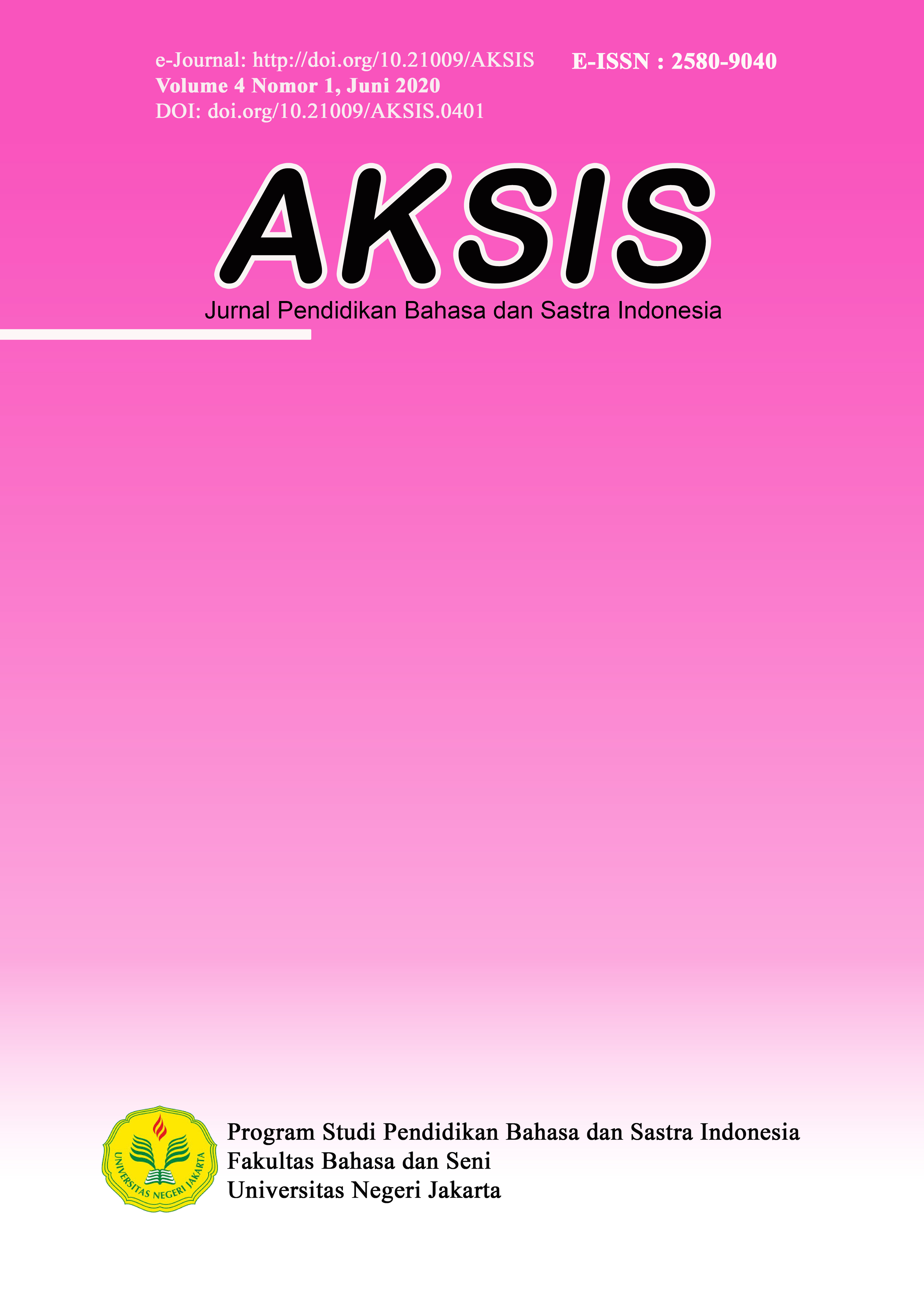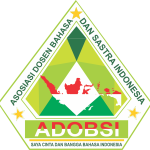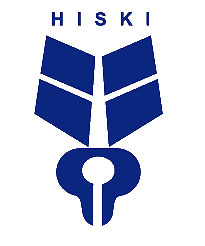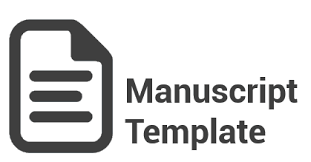Application of Character Education Values in Early Childhood Through Online Fables
DOI:
https://doi.org/10.21009/AKSIS.040108Keywords:
children's literature, fables, character valueAbstract
The purpose of this study is to describe the types of characters contained in online fables with children's literary approaches and character education. Research methods, namely descriptive qualitative with content analysis techniques. Data analysis was performed using content analysis and descriptive techniques. Data collection is based on literature. The data source, which is 5 fables with the character education theme, is downloaded online via the web https://dongengceritarakyat.com/. The types of characters found are described in detail according to the quotations found in the fable. Data analysis was carried out through the stages of data reduction, data presentation, concluding, and verification of research results. The results of the study found seven-character values as follows: (1) fable Crocodile and Singer Bird found polite and friendly characters; (2) Arrogant fable leaves are found to be humble and environmentally conscious characters; (3) the Young Mouse fable is found to be a character of curiosity; (4) fable Herders and Wild Goats found fair characters; and (5) the fable of contention of bees and wasps found wise character.
Abstrak
Iswan Afandi & Juanda; Application of Character Education ...
Tujuan penelitian ini adalah mendeskripsikan jenis karakter yang terdapat dalam fabelonline dengan pendekatan sastra anak dan pendidikan karakter. Metode penelitian, yaitu kualitatif deskriptif dengan teknik analisis isi. Analisis data dilakukan dengan teknik analisis isi dan teknik deskriptif. Pengumpulan data dilakukan berdasarkan kepustakaan. Sumber data, yaitu5fabelbertema pendidikan karakterdi unduh secara online melalui web https://dongengceritarakyat.com/. Jenis karakter yang ditemukan dideskripsikan secara terperinci sesuai dengan kutipan yang ditemukan dalam fabel. Analisis data dilakukan melalui tahapanreduksi data, penyajian data, pengambilan simpulan, dan verifikasi hasil penelitian. Hasil penelitian ditemukan tujuh nilai karakter sebagai berikut: (1) fabelBuaya dan Burung Penyanyiditemukan karakter sopan dan bersahabat; (2) fabelDaun yang Sombongditemukan karakter rendah hati dan peduli lingkungan; (3) fabel Tikus Muda ditemukan karakter rasa ingin tahu; (4) fabel Penggembala dan Kambing Liar ditemukan karakter adil; dan (5) fabelPertengkaran Lebah dan Tawon ditemukan karakter bijaksana.
Kata kunci: sastra anak, fabel, nilai karakter
References
Almerico, G. M. (2014). Building Character through Literacy with Children’s Literature. Research in Higher Education Journal, 26. https://eric.ed.gov/?id=EJ1055322
Arthur, J. (2005). The Re-Emergence of Character Education in British Education Policy. British Journal of Educational Studies, 53(3), 239–254. https://doi.org/10.1111/j.1467-8527.2005.00293.x
Barus, G. (2015). Menakar Hasil Pendidikan Karakter Terintegrasi di Smp. Jurnal Cakrawala Pendidikan, 34(2). https://doi.org/10.21831/cp.v2i2.4827
Bellous, J. E. (2009). J. Russell, How Children Become Moral Selves: Building Character and Promoting Citizenship in Education: Sussex Academic Press, Brighton, 2007. Studies in Philosophy and Education, 28(2), 189–192. https://doi.org/10.1007/s11217-008-9119-x
Berkowitz, M. W., & Bustamante, A. (2013). Using research to set priorities for character education in schools: A global perspective. Journal of Educational Policy, Special Issue, 7–20.
Bohlin, K. E. (2005). Teaching Character Education Through Literature: Awakening the Moral Imagination in Secondary Classrooms. 202.
Bridge, O. B. (2019). New perspectives on young children’s moral education: Developing character through a virtue ethics approach. Journal of Education for Teaching, 45(2), 236–238. https://doi.org/10.1080/02607476.2019.1579032
Cheung, C., & Lee, T. (2010). Improving social competence through character education. Evaluation and Program Planning, 33(3), 255–263. https://doi.org/10.1016/j.evalprogplan.2009.08.006
Clair, N., Miske, S., & Patel, D. (2012). Child Rights and Quality Education: Child-Friendly Schools in Central and Eastern Europe (CEE). European Education, 44(2), 5–22. https://doi.org/10.2753/EUE1056-4934440201
Duncan, B. J. (1997). Character Education: Reclaiming the Social. Educational Theory, 47(1), 119–130. https://doi.org/10.1111/j.1741-5446.1997.00119.x
Eliasa, E. I. (2014). Increasing Values of Teamwork and Responsibility of the Students through Games: Integrating Education Character in Lectures. Procedia - Social and Behavioral Sciences, 123, 196–203. https://doi.org/10.1016/j.sbspro.2014.01.1415
Freeman, G. G. (2014). The Implementation of Character Education and Children’s Literature to Teach Bullying Characteristics and Prevention Strategies to Preschool Children: An Action Research Project. Early Childhood Education Journal, 42(5), 305–316. https://doi.org/10.1007/s10643-013-0614-5
Fakhrurrazi, F. (2017). Dinamika Pendidikan Dayah Antara Tradisional dan Modern. At-Tafkir, 10(2), 100-111.
Fakhrurrazi, F. (2018). Hakikat pembelajaran yang efektif. At-Tafkir, 11(1), 85-99.
Ghony, M. D., & Almanshur, F. (2012). Metodologi Penelitian Kualitatif. Yogyakarta.
Gilead, T. (2011). Countering the Vices: On the Neglected Side of Character Education. Studies in Philosophy and Education, 30(3), 271–284. https://doi.org/10.1007/s11217-011-9223-1
Goralnik, L., Millenbah, K. F., Nelson, M. P., & Thorp, L. (2012). An Environmental Pedagogy of Care: Emotion, Relationships, and Experience in Higher Education Ethics Learning. Journal of Experiential Education, 35(3), 412–428. https://doi.org/10.5193/JEE35.3.412
Grosseck, G., & Holotescu, C. (2011). Teacher education in 140 characters—Microblogging implications for continuous education, training, learning and personal development. Procedia - Social and Behavioral Sciences, 11, 160–164. https://doi.org/10.1016/j.sbspro.2011.01.053
Helterbran, V. R. (2009). Linking Character Education and Global Understanding through Children’s Picture Books. Kappa Delta Pi Record, 45(2), 69–73. https://doi.org/10.1080/00228958.2009.10516674
Irawati, R. P., & Elmubarok, Z. (2014). Developing a Thematic and Character-Based Indonesian Textbook for Elementary School Students Through Children’s Literature. Jurnal Pendidikan Karakter, IV(2), 81–96. https://doi.org/10.21831/jpk.v0i2.2179
JIST Life (Ed.). (2006). Young person’s character education handbook. JIST Life.
Juanda, J. (2019a). Eksplorasi Nilai Fabel Sebagai Sarana Alternatif Edukasi Siswa. Jurnal Pendidikan Bahasa dan Sastra, 18(2), 294–303. https://doi.org/10.17509/bs_jpbsp.v18i2.15517
Juanda, J. (2019b). Pendidikan Karakter Anak Usia Dini melalui Sastra Klasik Fabel Versi Daring. Jurnal Obsesi : Jurnal Pendidikan Anak Usia Dini, 3(1), 39-54–54. https://doi.org/10.31004/obsesi.v3i1.126
Karatay, H. (2010). Using Literary Works in Character Education. Journal of Turkish Studies, Volume 6 Issue 1(6), 1439–1454. https://doi.org/10.7827/TurkishStudies.2191
Kim, D. (2015). A Study on the Class of Education that Builds Students’ Character Through Films – Classes at the University of Liberal Arts. Procedia - Social and Behavioral Sciences, 174, 1529–1533. https://doi.org/10.1016/j.sbspro.2015.01.784
Klein-Ezell, D. C. (2014). Character Education Using Children’s Literature, Puppets, Magic Tricks and Balloon Art. International Journal of Humanities and Social Science, 4(14), 16.
Kotsonis, A. (2019). Safeguarding against failure in intellectual character education: The case of the eristic agent. Theory and Research in Education, 17(3), 239–252. https://doi.org/10.1177/1477878519893955
Lake, K. (2011). Character Education from a Children’s Rights Perspective: An Examination of Elementary Students’ Perspectives and Experiences. The International Journal of Children’s Rights, 19(4), 679–690. https://doi.org/10.1163/157181811X547281
Lee, G.-L. (2013). Re-emphasizing Character Education in Early Childhood Programs: Korean Children’s Experiences. Childhood Education, 89(5), 315–322. https://doi.org/10.1080/00094056.2013.830907
Lester H. Hunt. (2009). Literature as Fable, Fable as Argument. Philosophy and Literature, 33(2), 369–385. https://doi.org/10.1353/phl.0.0053
Lewis, M., & Ponzio, V. (2016). Character Education as The Primary Purpose of Schooling for the Future. Jurnal Ilmiah Peuradeun, 4(2), 137–146. https://doi.org/10.26811/peuradeun.v4i2.92
Lickona, T. (1996). Eleven Principles of Effective Character Education. Journal of Moral Education, 25(1), 93–100. https://doi.org/10.1080/0305724960250110
Lintner, T. (2011). Using “Exceptional” Children’s Literature to Promote Character Education in Elementary Social Studies Classrooms. The Social Studies, 102(5), 200–203. https://doi.org/10.1080/00377996.2010.550955
Mei-Ju, C., Chen-Hsin, Y., & Pin-Chen, H. (2014). The Beauty of Character Education on Preschool Children’s Parent-child Relationship. Procedia - Social and Behavioral Sciences, 143, 527–533. https://doi.org/10.1016/j.sbspro.2014.07.431
Miles, M. B., Huberman, A. M., & Saldaña, J. (2014). Qualitative data analysis: A methods sourcebook (Third edition). SAGE Publications, Inc.
Mitschek, M. R., Nolasco, M. J. M., Pindot, M. C. D., & Sy, R. J. (2017). Kwentong Pambata: Interactive Storybook for Filipino Fables, Legends, Parables and Short Stories. Celt: A Journal of Culture, English Language Teaching & Literature, 17(2), 139–149. https://doi.org/10.24167/celt.v17i2.1389
Munaris. (2011). Pemanfaatan Buku Kecil-Kecil Punya Karya sebagai Bahan Pembelajaran Sastra untuk Pengembangan Karakter. Jurnal Pendidikan Karakter, 1(1), 23.
Neng Lin, W., Enright, R., & Klatt, J. (2011). Forgiveness as character education for children and adolescents. Journal of Moral Education, 40(2), 237–253. https://doi.org/10.1080/03057240.2011.568106
Nurgiyantoro, B. (2010). Sastra Anak dan Pembentukan Karakter. Jurnal Cakrawala Pendidikan, 1(3). https://doi.org/10.21831/cp.v1i3.232
Pala, A. (2011). The Need for Character Education. International Journal of Social Sciences and Humanity Studies, 3(2), 23–32.
Rachmanita, E. (2016). Pembelajaran mendengarkan Cerita Anak Berbasis Pendidikan Karakter untuk Mengembangkan Pribadi Siswa. Jurnal Ilmiah Bahasa dan Sastra, 3(2), 111. https://doi.org/10.21067/jibs.v3i2.1465
Ramdhani, S., Yuliastri, N. A., Sari, S. D., & Hasriah, S. (2019). Penanaman Nilai-Nilai Karakter melalui Kegiatan Storytelling dengan Menggunakan Cerita Rakyat Sasak pada Anak Usia Dini. Jurnal Obsesi : Jurnal Pendidikan Anak Usia Dini, 3(1), 153-160–160. https://doi.org/10.31004/obsesi.v3i1.108
Revell, L. (2002). Children’s Responses to Character Education. Educational Studies, 28(4), 421–431. https://doi.org/10.1080/0305569022000042426
Rokhman, F., Hum, M., Syaifudin, A., & Yuliati. (2014). Character Education for Golden Generation 2045 (National Character Building for Indonesian Golden Years). Procedia - Social and Behavioral Sciences, 141, 1161–1165. https://doi.org/10.1016/j.sbspro.2014.05.197
Safira, J. A., Widayanti, D. V., & Handayani, S. (2019). La Simplification Des Fables Françaises Pour Les Lyceens. Didacticofrancia: Journal Didactique du FLE, 8(1), 56–61. https://doi.org/10.15294/didacticofrancia.v8i1.34698
Smith-D’Arezzo, W. M. (2003). Diversity in Children’s Literature: Not Just a Black and White Issue. Children’s Literature in Education, 34(1), 75–94. https://doi.org/10.1023/a:1022511917336
Sriyono. (2010). Pengembangan Pendidikan Budaya dan Karakter Bangsa Melalui Integrasi Mata Pelajaran, Pengembangan dan Budaya Sekolah. Temu Ilmiah Nasional Guru II: Membangun Profesionalitas Insan Pendidikan Yang Berkarakter dan Berbasis Budaya, Tangerang Selatan. http://repository.ut.ac.id/2557/
Suriansyah, A., & Aslamiah. (2015). Strategi Kepemimpinan Kepala Sekolah, Guru, Orang Tua, dan Masyarakat dalam Membentuk Karakter Siswa.Jurnal Cakrawala Pendidikan, 34(2). https://doi.org/10.21831/cp.v2i2.4828
Surya, Y. F. (2017). Penggunaan Model Pembelajaran Pendidikan Karakter Abad 21\ pada Anak Usia Dini. Jurnal Obsesi : Jurnal Pendidikan Anak Usia Dini, 1(1), 52-61–61. https://doi.org/10.31004/obsesi.v1i1.31
Suryaman, M. (2010). Pendidikan Karakter Melalui Pembelajaran Sastra.Jurnal Cakrawala Pendidikan, 1(3). https://doi.org/10.21831/cp.v1i3.240
Suhita, S., & Purwahida, R. (2018). Apresiasi Sastra Indonesia dan Pembelajarannya. Bandung: Remaja Rosdakarya.
Turan, F., & Ulutas, I. (2016). Using Storybooks as a Character Education Tools. Journal of Education and Practice, 7(15), 169–176.
Ülger, M., Yiğittir, S., & Ercan, O. (2014). Secondary School Teachers’ Beliefs on Character Education Competency. Procedia - Social and Behavioral Sciences, 131, 442–449. https://doi.org/10.1016/j.sbspro.2014.04.145
Widyahening, E. T., & Wardhani, N. E. (2016). Literary Works and Character Education. International Journal of Language and Literature, 4(1), 176–180. https://doi.org/10.15640/ijll.v4n1a20
Wuryandani, W., Maftuh, B., Sapriya, & Budimansyah, D. (2014). Pendidikan Karakter Disiplin di Sekolah Dasar. Jurnal Cakrawala Pendidikan, 33(2). https://doi.org/10.21831/cp.v2i2.2168
Young, T. A., Hadaway, N. L., & Ward, B. A. (2013). International Children’s Trade Books: Building Blocks for Character Education. Childhood Education, 89(6), 379–386. https://doi.org/10.1080/00094056.2013.852894
Yusoff, M. Z. M., & Hamzah, A. (2015). Direction of Moral Education Teacher to Enrich Character Education.Jurnal Ilmiah Peuradeun, 3(1), 119–132.
Zlatković, B., & Mišića, D. (2012). Teacher’s Education for a More Flexible Approach to Character Analysis in Literary Creations. Procedia - Social and Behavioral Sciences, 45, 486–492. https://doi.org/10.1016/j.sbspro.2012.06.585






